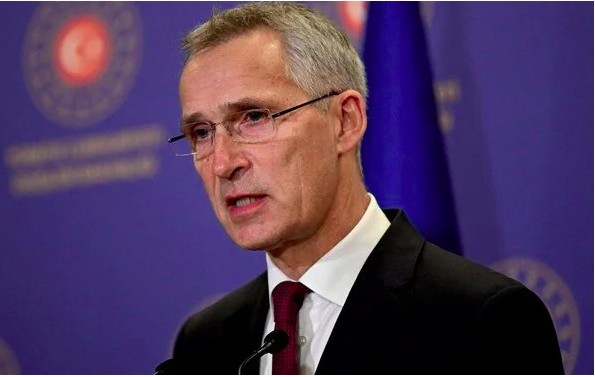Stoltenberg: Accepting Ukraine into NATO without the occupied territories is quite realistic
He compares this situation with West and East Germany, when NATO defended only the first

Former NATO Secretary General Jens Stoltenberg stated that it is quite possible to accept Ukraine into NATO, thus providing it with strong security guarantees, even if the guarantee does not extend to the entire internationally recognized territory of Ukraine.
Stoltenberg handed over the chairmanship of the alliance to former Dutch Prime Minister Mark Rutte on October 1. He regrets that the alliance did not give Ukraine more weapons, including modern ones, before the Russian invasion and at the beginning of the war, the ex-official said in an interview with the Financial Times.
After the US presidential elections in November, efforts to resolve the conflict will receive a new impetus, "some new initiative will appear" to find a way out of the impasse, Stoltenberg believes.
"These could be attempts to start movement on the battlefield combined with movement around the negotiating table."
Western countries should create conditions that will allow Ukrainians to sit down with the Russians "and get something acceptable for them, where they survive as an independent nation."
Such an exit may include the guarantees of Article 5 of the NATO Charter ("an attack on one NATO member is an attack on NATO as a whole"); but these guarantees will provide for the protection of only part of the Ukrainian territory, Stoltenberg believes:
"If there is a desire, there will always be a solution. A line is needed, the crossing of which will determine the application of Article 5, and Ukraine must control the entire territory up to this border. It can be a line that does not necessarily coincide with the internationally recognized border."
Such an approach, Stoltenberg believes, can remove the fears of the USA and Germany, which currently do not want to accept Ukraine into NATO, fearing that in this case they will be involved in a war with Russia.
In order to find a way out of the current conflict that would allow Ukraine to live in peace, he cites historical analogies, warning that one should not compare situations 100%.
Finland, during the war with the USSR in 1939-1940, caused much more damage to the Red Army than anyone could have expected, but as a result was forced to cede 10% of its territory in order to make peace. As a result, "she got a safe border," Stoltenberg points out.
But there is another, more relevant example, Stoltenberg says, of post-war West Germany, which NATO began to protect, while East Germany did not.
Another example is Japan, which has security guarantees from the USA, but without taking into account the Kuril Islands, which Japan considers its territory, and Russia – its own.
According to Stoltenberg, he understood that putin would start a war as early as mid-autumn 2021, about a month before the United States began to publicly announce this with reference to its intelligence.
Some European leaders – Olaf Scholz, Emmanuel Macron – did not want to believe it, Stoltenberg noted: "I told them: it doesn't matter whether you think the probability of this is 90% or 10% ... we have to prepare for what it will happen."
Before the war, European countries were poorly prepared, says Stoltenberg – Europe lacks of weapons, military equipment, and troops on high alert. While the number of NATO countries (excluding the U.S.) spending the target of 2 percent of GDP on defense increased from 4 in 2018 to 23 this year, "we know we're lagging behind" Russia, Stoltenberg said.
He quietly added that Russia knows about it.
According to Stoltenberg, he cannot say exactly what it will cost to strengthen the defense potential to the required level, including the necessary military support for Ukraine:
"But I can tell you with confidence that if NATO allies are going to fulfill these promises, it will cost much more than 2 %, be it 2.5% or 3% (of GDP)".
Background. As reminded, the day before the new NATO Secretary General Mark Rutte, while visiting Kyiv, said that "Ukraine is now closer to NATO than ever before – the allies are building a bridge for its entry into the alliance."
If you have read this article to the end, we hope that means it was useful for you.
We work to ensure that our journalistic and analytical work is of high quality, and we strive to perform it as competently as possible. This also requires financial independence. Support us for only UAH 196 per month.
Become a Mind subscriber for just USD 5 per month and support the development of independent business journalism!
You can unsubscribe at any time in your LIQPAY account or by sending us an email: [email protected]



